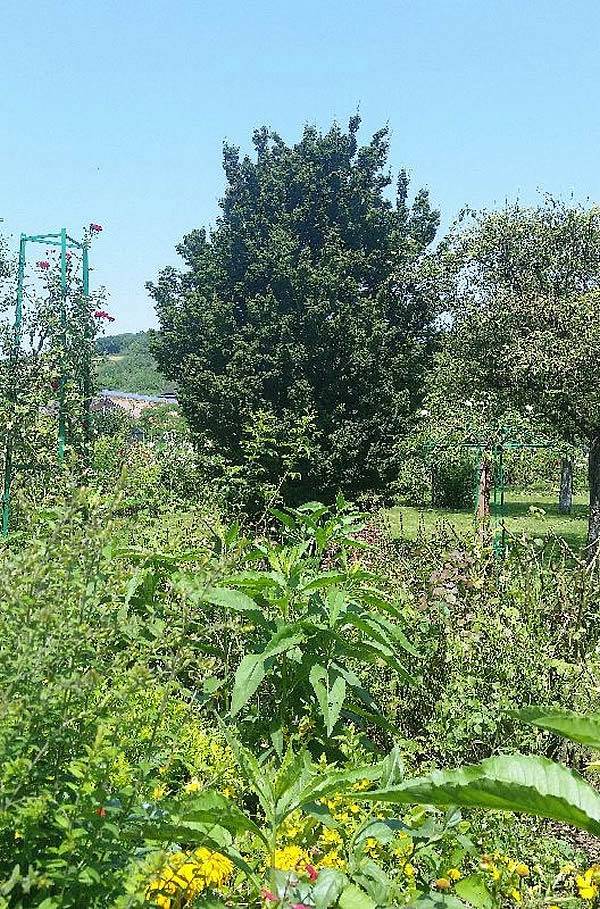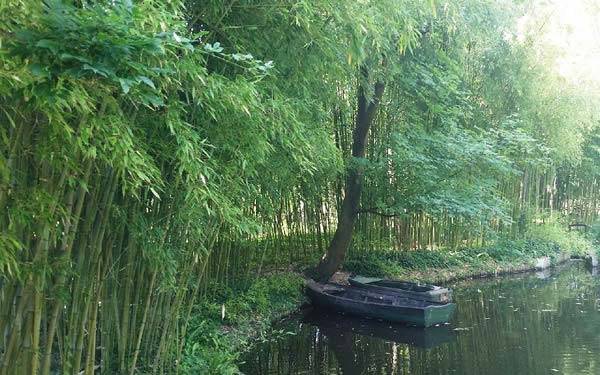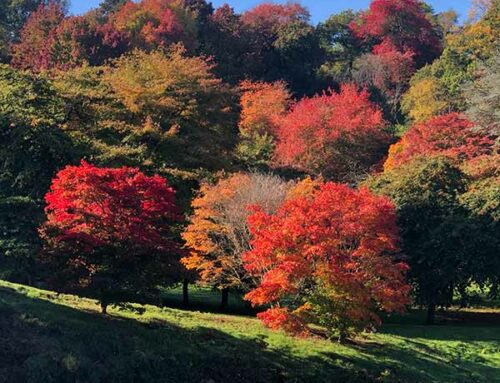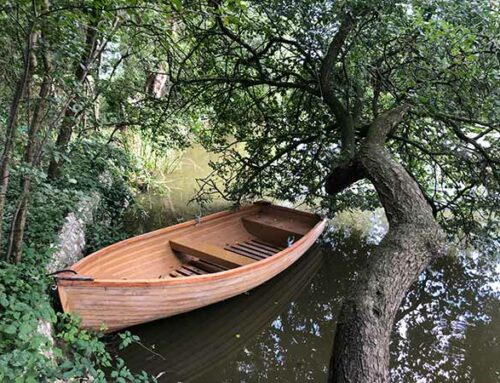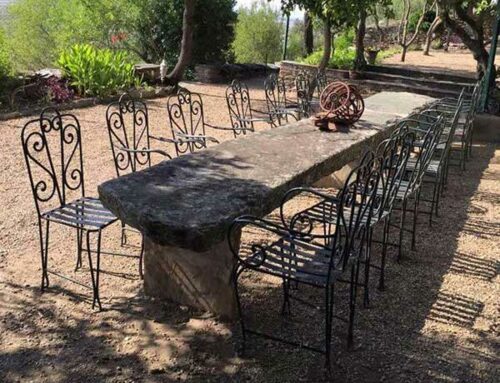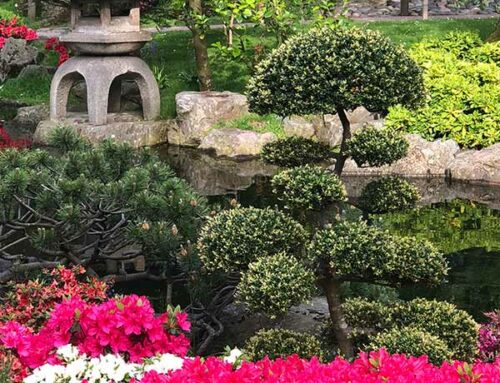On a very hot summer day we visited the delightful Monet’s Gardens in Giverny and were mesmerised by the serenity and peaceful atmosphere. We wanted to share what we saw in the gardens with you as inspiration for your own garden along with some background information on the history of Monet and his exquisite gardens.
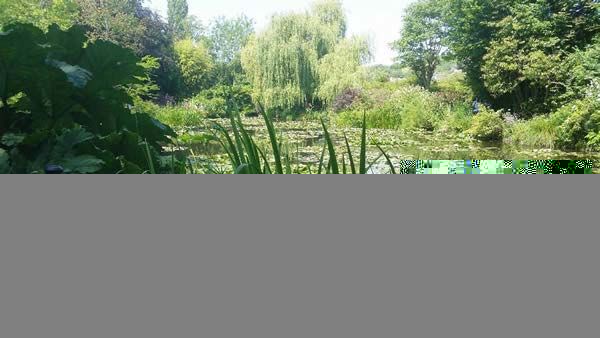
The Japanese-inspired Water Garden at the Claude Monet Gardens in Giverny
Even if you’re not the ‘artsy’ type, chances are you’ve heard of the French Impressionist painter – Claude Monet. Born in 1840 and encouraged from a young age to paint outdoors, Monet’s ambition was to document the French countryside and the passing of the seasons. Monet was the founder of the Impressionist movement and this new style of painting was a way for artists to free themselves from the more traditional style that was predominant at the time.
Some of Monet’s most famous paintings were of the garden in Giverny including the renowned ‘Water Lily Pond’ Monet lived in the house at Giverny until his death in 1926; his son Michel inherited the house and surrounding gardens.
During the course of the Second World War, the house and gardens fell into a state of disrepair and it was not until 1977 that reconstruction was started on the garden to the plan set out by Monet. It took ten years to restore the garden and the house to their former glory. The property has been open to the public since September 1980.
Visiting Monet’s Garden
There are two parts to Monet’s garden, a flower garden called Clos Normand in front of the house and a Japanese-inspired Water Garden on the other side of a road, linked by an underpass walkway.
The two parts of Monet’s garden – Clos Normand and The Water Garden – contrast and complement one another wonderfully. Both have been carefully restored to the finest detail, taking visitors back in time to the stunning display of nature that so inspired Monet.
Clos Normand
Clos Normand is roughly one hectare and is a breath-taking garden full of perspectives, symmetries and colours. The land is divided into flowerbeds where ornamental fruit trees, climbing roses and Clematis grow in abundance together with pretty Peonies. Fragrant rosemary and lavender frame the edge of the pathways.
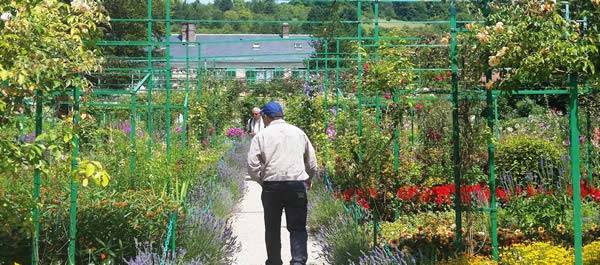
Exploring Clos Normand at Claude Monet’s Gardens in Giverny
We nearly walked past, but suddenly came across a very large (maybe 5-7m height) specimen of Acer Shishigashira, which almost had the appearance of Yew but was in fact this very unusual and rare to find Acer known as Lion’s Head Maple. The colour change of this will be incredible in autumn/winter (by the way if anyone has a photo of this spectacular Acer Shishigashira with its autumn colour foliage we would love to see this!).
The Water Garden
The Water Garden is the most well-known and personally our favourite area at Giverny. It was inspired by the Japanese gardens that Monet admired from the prints he collected avidly. In this water garden, you will find the world famous Japanese bridge covered with Wisterias and surrounded by Cotinus Grace and Cotinus Coggygria Royal Purple, massive Gunnera, arching Weeping Willows and a Bamboo wood. There are also large, very mature Japanese Acers and Japanese Cherry Trees.
Monet had the original Japanese bridge built by a local craftsman. By the time the garden was restored, the bridge was too damaged to be saved. It had to be rebuilt by a firm from Vernon. Amazingly the Wisterias that stand today covering the bridge are the very ones that were planted by Monet himself around 100 years ago.
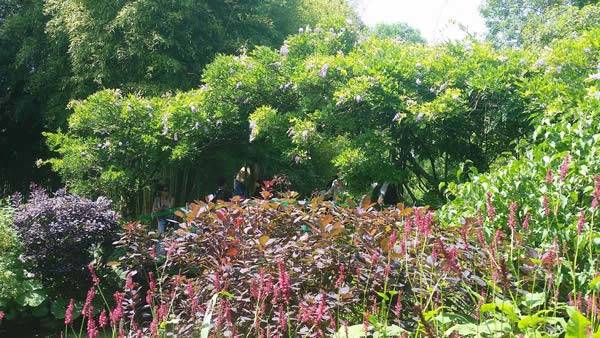
The Wisteria Bridge at Claude Monet’s Gardens in Giverny
Monet dedicated much of his work to capturing the mist and transparencies found in the reflections in the water here. These gardens are absolutely stunning and inspirational – definitely well worth the visit!
Have you visited Monet’s Garden? We would love to hear about your experience, please leave us a comment in the comment section below.

